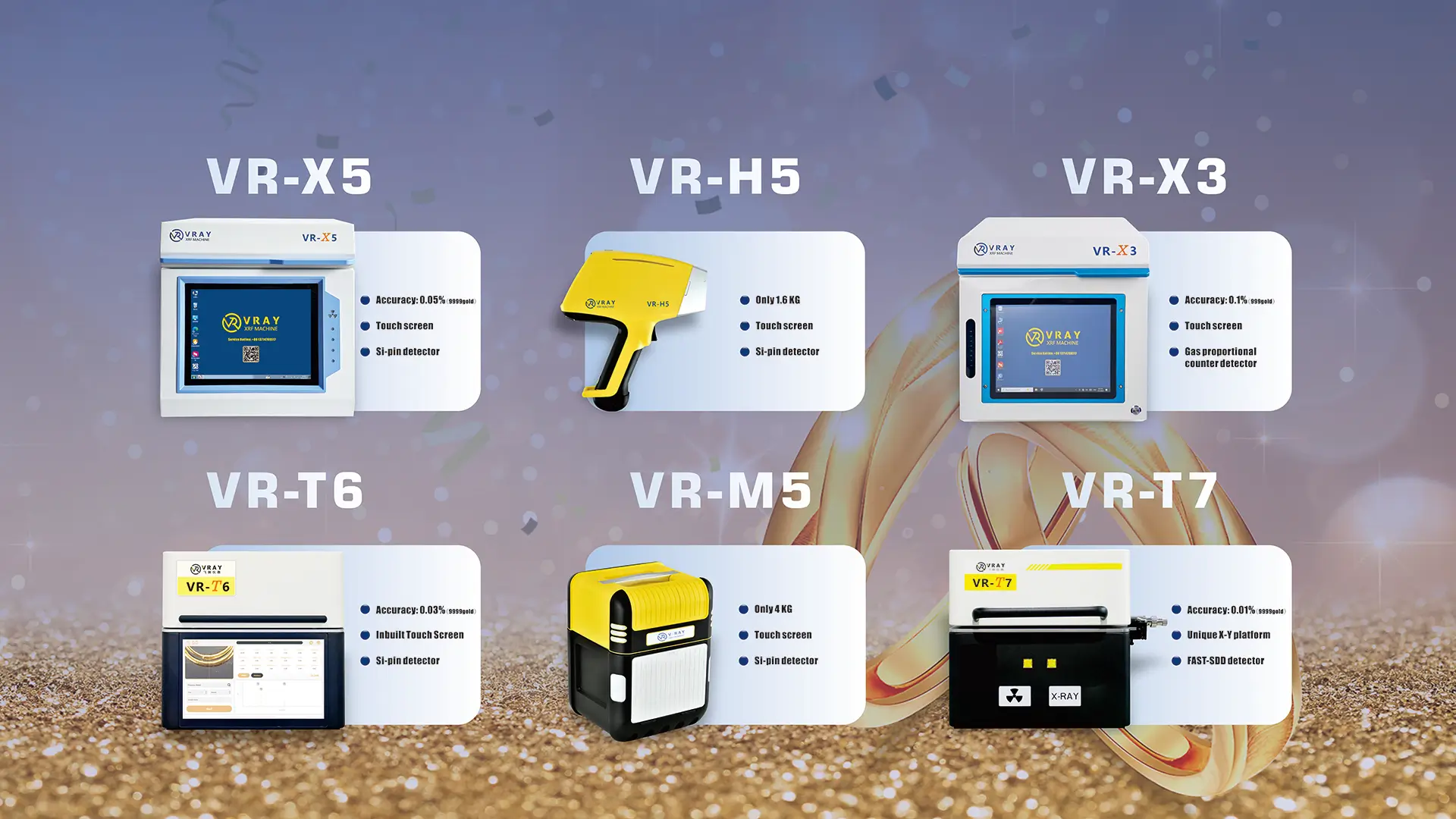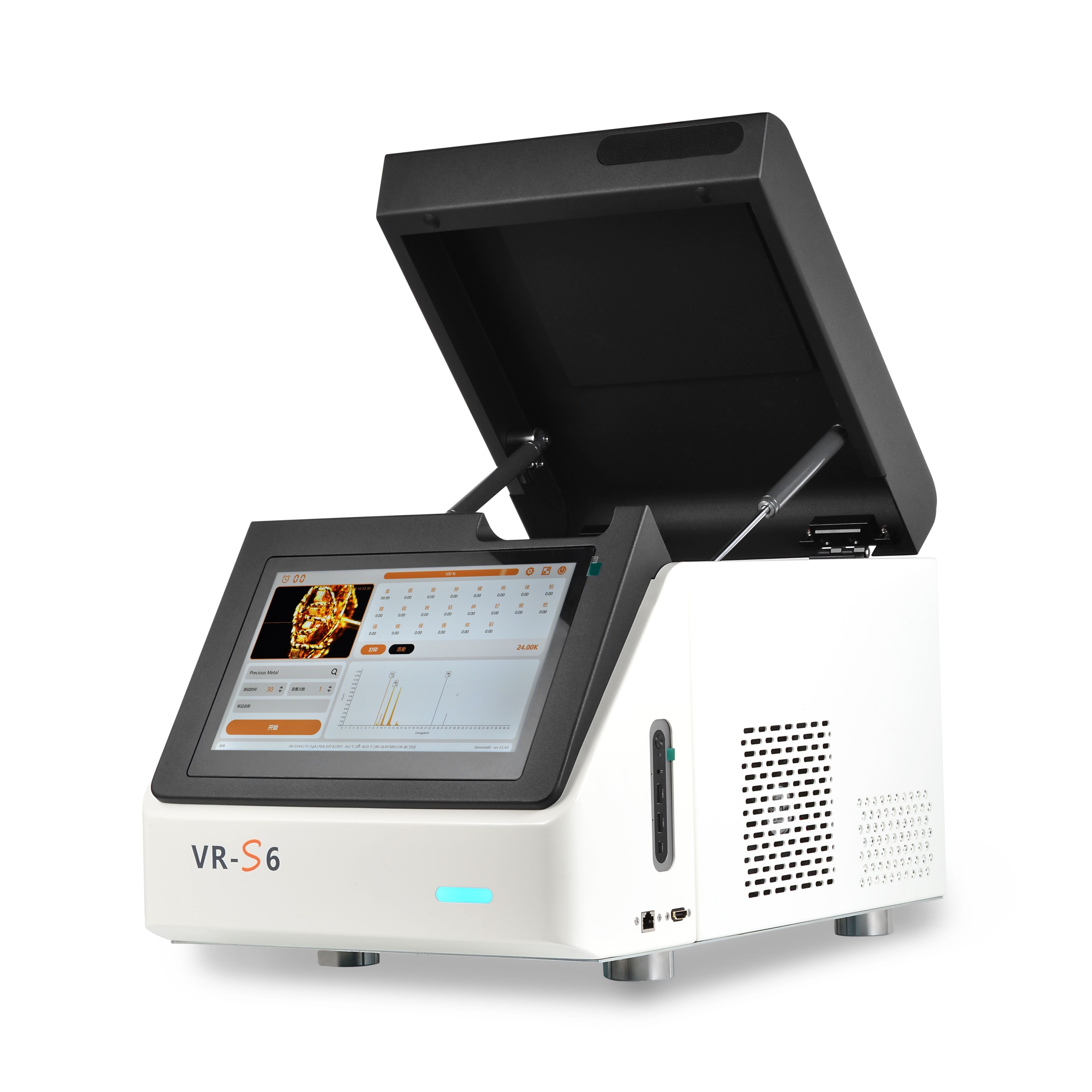What’s the Difference Between XRF and EDXRF Spectrometer?
X-ray Fluorescence (XRF) is a widely used analytical technique for identifying and quantifying the elemental composition of materials. Within the XRF family, there are two primary types of technologies: Energy Dispersive XRF (EDXRF) and Wavelength Dispersive XRF (WDXRF). Although they share the same fundamental principle—using X-rays to excite atoms and detect their emitted radiation—the two methods differ significantly in detection mechanisms, resolution, speed, and application scenarios.
In this article, we’ll explore the key differences between EDXRF and WDXRF, and how VRAY Instrument’s EDXRF solutions can support your precise testing needs.

What Is EDXRF?
Energy Dispersive X-ray Fluorescence (EDXRF) uses a solid-state detector (such as SDD or Si-PIN) to measure the energy of emitted X-rays from a sample. It records the full energy spectrum simultaneously, making it a fast and flexible solution for multi-element analysis.
Key Features of EDXRF:
Faster analysis time – all elements are measured at once.
Compact and portable options available.
Lower cost and easier operation.
Ideal for on-site or general laboratory testing.
What Is WDXRF?
Wavelength Dispersive X-ray Fluorescence (WDXRF) uses diffraction crystals to separate X-rays by wavelength and measure them sequentially using a goniometer. This approach yields higher resolution and sensitivity, particularly for detecting elements with overlapping spectral lines.
Key Features of WDXRF:
Superior spectral resolution – better separation of closely spaced lines.
Higher accuracy and precision, especially for trace elements.
Stable for long-term laboratory use.
Typically used in large-scale industrial or research laboratories.
EDXRF vs. WDXRF: Comparison Table
| Feature | EDXRF | WDXRF |
|---|---|---|
| Detection Principle | Measures X-ray energy directly | Measures wavelength using crystals |
| Analysis Speed | Fast (simultaneous detection) | Slower (sequential scanning) |
| Resolution | Moderate | High (better separation of overlapping peaks) |
| Sensitivity | Good for major/minor elements | Excellent for trace element detection |
| Portability | Compact, available in handheld and benchtop | Large, bench-based only |
| Cost | Lower | Higher due to complex optics |
| Typical Use Case | Jewelry, metal recycling, RoHS, alloys | Cement, petrochemicals, mining, environmental labs |
Applications of EDXRF and WDXRF

Precious metals analysis (gold, silver, platinum)
RoHS compliance testing
Jewelry authentication
Scrap metal recycling
Coating thickness measurement (with specialized models)
On-site testing and handheld usage
WDXRF Applications
Geological and mineral analysis
Cement and building materials
Petrochemical and fuel analysis
High-precision environmental monitoring
Academic or R&D labs with complex samples
Why Choose VRAY’s XRF and EDXRF Instruments?
While WDXRF is ideal for high-end, trace-level analysis in specialized labs, EDXRF offers a balance of performance, portability, and affordability—and that’s where VRAY Instrument excels.
VRAY’s Advantages in EDXRF Technology:
Fast and accurate detection for 7–20+ elements.
Customizable models for handheld, benchtop, or all-in-one needs.
Advanced detectors (SDD, gas proportional counters) to enhance sensitivity.
User-friendly software with real-time results.
Ideal for gold purity testing, plating thickness measurement, and non-destructive material verification.
Whether you’re in the jewelry industry, recycling business, or a QC lab, VRAY’s EDXRF analyzers provide reliable, cost-effective solutions tailored to your workflow.
Conclusion
Both EDXRF and WDXRF are powerful techniques under the XRF umbrella, each with its strengths:
Choose EDXRF if you need fast, cost-effective, and flexible analysis—especially suitable for jewelry, metals, and industrial fieldwork.
Choose WDXRF if your lab requires the highest precision, especially in complex matrices or for detecting elements at very low concentrations.
VRAY Instrument’s EDXRF solutions bridge the gap between affordability and high-performance testing, making elemental analysis accessible and efficient. Whether in the field or the lab, VRAY is your partner in precision.

WhatsApp
Scan the QR Code to start a WhatsApp chat with us.